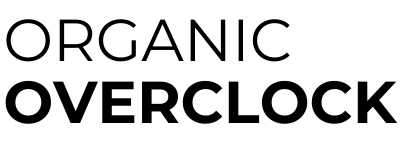You made it through the ice bath. The cold shock, the mental battle, the urge to bolt — all behind you now.
But here’s what most people miss: what happens after an ice bath is just as important as the plunge itself. Maybe more important.
We obsess over how long to stay in, what temperature to use, and breathing techniques. Yet we completely ignore the 2–4 hours afterward when your body is doing its most interesting work.
This guide breaks down the real post-ice bath effects — the physiology, the mental shifts, the recovery timeline, and exactly what you should (and shouldn’t) do next to maximize every benefit. If you’re unsure about your starting point, here’s a breakdown of how cold an ice bath should be and how long to stay in safely. — the physiology, the mental shifts, the recovery timeline, and exactly what you should (and shouldn’t) do next to maximize every benefit.
1. Immediate Physiological Responses (0–15 Minutes)
Step out of that ice bath and your body launches into overdrive. Here’s the cascade:
- Vasodilation kicks in hard. Blood that was squeezed away from your skin and limbs comes rushing back. It’s not gradual — it’s like opening floodgates.
- Heart rate spikes as circulation ramps up. This helps deliver oxygen and nutrients to tissues that were just in survival mode.
- Endorphin surge hits. That natural high isn’t in your head — it’s biochemical. Mood and pain relief spike fast.
- Hormonal fireworks continue. Norepinephrine and dopamine levels remain elevated well beyond the plunge, driving clarity and focus.
- Shivering may start if your core temperature dropped significantly. It’s your body generating heat to return to baseline.
This post-ice bath circulation phase is your body’s built-in recovery mechanism.
2. The “Rebound Effect” (15 Minutes – 2 Hours Post)
This is where cold plunges get interesting. Your body doesn’t just go back to baseline — it overshoots in performance-enhancing ways:
- Metabolism remains elevated while you rewarm. More calories burned at rest, especially if you plunged fasted.
- Cold shock proteins stay active, helping repair cells and reduce inflammation.
- Parasympathetic nervous system kicks in. After the adrenaline, you enter a calm, grounded state. Think: mental stillness.
- Insulin sensitivity improves temporarily, optimizing nutrient uptake if you eat post-plunge.
I tested this for 30 days. The mental clarity during this rebound window was undeniable: sharper thinking, steadier emotions.
This rebound recovery after ice bath phase is where the real magic happens — not during the cold, but after.
3. Long-Term Adaptations (With Consistent Practice)
Do it once and you feel better. Do it consistently, and your body rewires itself.
- Cold tolerance improves fast. What felt brutal on week one becomes manageable.
- Stress resilience strengthens. Your nervous system learns to stay calm under pressure — in cold or conflict.
- Chronic inflammation may reduce. Cold exposure appears to support anti-inflammatory regulation.
- Sleep improves thanks to hormonal balance and stress modulation.
- Immune response becomes more efficient over time.
Research from Huberman and Wim Hof’s methodologies supports these claims. But consistency is everything.
If you’re new to cold therapy, make sure you’ve reviewed what to do before an ice bath to set yourself up for safe, effective exposure.
4. What to Do After an Ice Bath (Best Practices)
What should you actually do to lock in the benefits?
- Dry off quickly, but avoid heat. Pat dry to stop heat loss, but don’t jump into a hot shower yet.
- Let your body rewarm naturally for 5–15 minutes. It’s part of the process.
- Move lightly. Walk or stretch to support circulation.
- Sip something warm or wear light clothing. Just skip extreme heat.
- Track your response. Log mood, clarity, soreness, and energy for patterns.
Bonus Tip: Avoid hard workouts immediately after. You’re in a rest-and-digest state — protect that recovery zone.
This post-ice bath recovery protocol maximizes every physiological benefit.
5. What Not to Do After an Ice Bath
These are common mistakes that reduce or reverse the benefits:
- No alcohol. It blocks the adaptive stress response.
- No high-heat exposure. Saunas or hot showers too soon short-circuit the rebound effect.
- Avoid intense exertion. Let your nervous system reset before adding more stress.
- Don’t forget hydration. Yes, you can sweat during a plunge. Replenish fluids.
- Don’t ignore red flags. Numbness that doesn’t resolve, mental fog, or pain = stop and reassess.
6. Who Benefits Most from the After-Effects?
Wondering if the post-ice bath payoff is worth it? Here’s who stands to gain the most:
- Athletes looking to reduce inflammation, speed up recovery, and get back to training faster.
- Stressed professionals seeking nervous system regulation and improved emotional control.
- Biohackers and high performers wanting to fine-tune metabolism, focus, and hormonal health.
- Anyone struggling with poor sleep or chronic inflammation who needs a reliable, low-cost way to support recovery.
Want to dive deeper into the full list of benefits? Explore the research-backed ice bath benefits including mood, metabolism, inflammation control, and nervous system regulation.
Final Thoughts: The Real Transformation Happens After
The cold is the spark. The aftermath is the fire.
The real benefit isn’t surviving the ice. It’s how your body and brain respond after.
Treat those first two hours post-plunge as sacred recovery time. Respect the rebound. Stay consistent. Track what works.
The cold teaches presence. The rebound teaches resilience.
Do both well, and the results stick.
